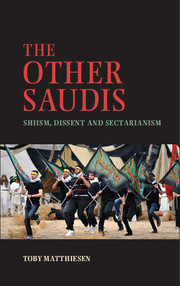Book contents
- Frontmatter
- Dedication
- Contents
- List of Maps and Pictures
- Acknowledgements
- A Note on Conventions
- Glossary
- Abbreviations
- Map
- Introduction
- 1 Politics of Notables
- 2 Oil and Dissent
- 3 Shia Islamism
- 4 A Decade of Confrontation
- 5 No More Revolution
- 6 Marginal Recognition
- 7 A New Intifada
- Conclusion The Politics of Sectarianism
- Bibliography
- Index
- References
4 - A Decade of Confrontation
Published online by Cambridge University Press: 05 December 2014
- Frontmatter
- Dedication
- Contents
- List of Maps and Pictures
- Acknowledgements
- A Note on Conventions
- Glossary
- Abbreviations
- Map
- Introduction
- 1 Politics of Notables
- 2 Oil and Dissent
- 3 Shia Islamism
- 4 A Decade of Confrontation
- 5 No More Revolution
- 6 Marginal Recognition
- 7 A New Intifada
- Conclusion The Politics of Sectarianism
- Bibliography
- Index
- References
Summary
Why did they have to go through fifteen years of siege and absence from the world and keeping people in the dark, only to reap such a paltry harvest? What real gains did we glean from it?
Seba al-Herz – The OthersRevolutionary Iran and the Gulf Shia
Immediately after the Iranian Revolution the MVM and its leaders such as Muhammad Taqi al-Mudarrisi became very close to some political factions in Iran. The MVM cadres as well as Muhammad al-Shirazi moved to Iran. Given the harsh response of the security forces and the arrest of scores of demonstrators, many OIRAP leaders and activists went into exile. After the intifada several hundred young Saudi Shia went to the hawzat al-Qaʾim of the MVM in Tehran. MVM was provided with the grounds of the former women’s association (sazeman-e zanan) in Mamazand outside Tehran to establish a large educational centre. This hawza was modelled on the hawza in Kuwait. Muhammad Taqi al-Mudarrisi was the main supervisor and administered the hawza with the help of Hasan al-Saffar, Muhammad Fawzi, Muhammad al-Sayf, Sahib al-Sadiq and some others. The hawza had several hundred students, most of whom were Saudis.
In post-revolutionary Iran MVM and its regional branches mainly dealt with Muhammad Montazeri, the son of Hossein ʿAli Montazeri, and after Muhammad’s death with Mehdi Hashemi. Muhammad was the main interlocutor between the Iranians and the ‘Liberation Movements’, until he was killed in the bombing of the headquarters of the Islamic Republic Party in 1981. After Muhammad’s death, OIRAP printed condolence telegrams to Ruhollah Khomeini and Hossein ʿAli Montazeri and published a long article about Muhammad’s achievements in which it praised his support of the foreign revolutionary movements in Iran and acknowledged that OIRAP had known him for years before the Iranian Revolution. Thereafter, Mehdi Hashemi, who was Hossein ʿAli Montazeri’s son in law, was in charge of coordinating the activities of the liberation movements from 1981 until he was arrested in 1986 during the Iran-Contra affair. It is still not clear who exactly in the Iranian government knew about assistance to Gulf Shia and some argue that the Iranian Foreign Ministry, for example, was opposed to many of the export operations. The Montazeri/Hashemi group was one of several factions wrestling for influence in post-revolutionary Iran and its role largely ended with the arrest of Mehdi Hashemi in 1986.
- Type
- Chapter
- Information
- The Other SaudisShiism, Dissent and Sectarianism, pp. 114 - 139Publisher: Cambridge University PressPrint publication year: 2014



